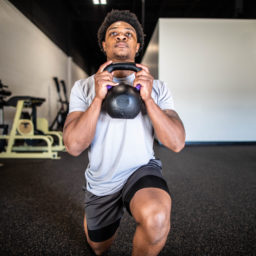I am sure you have seen percentage-based training before. If you haven’t then either you have never used someone’s training program or you just did not know what you were looking at. In this post I am going to break down what percentage-based strength training is and discuss some of the pros and cons of using it.
What is percentage-based strength training?
Percentage-based strength training is using a percentage of your one rep max (1RM) to determine the intensity of your lifting loads for a given exercise. You will often see it written something like this.
5×5 @ 85% 1RM
Another method is sometimes a training program might ask you to complete a given exercise at a certain RM. This is either done by making an educated guess or you may have determined this number from earlier strength testing.
Example,
5×5 @ your 6RM
Although less common you may sometimes see it written as a percentage of a 2,3 or even 5RM.
How do I use percentage-based training?
In order to participate in percentage-based training you must know your 1RM. There are many ways to determine your 1 RM here are some standard ways plus some advice.
Do a 1RM max test
This may seem obvious, but this is only one way to determine your 1RM and in my opinion the best way.
In order to do this you must adequately warm up for whichever exercise you would like to test for the day first. Once the warm up is complete you will complete a series of “attempts” until you fail to finish the rep, your form diminishes, or you lose confidence in your next attempt.
Three pieces of advice
- Start with a weight you that is challenging, but you know you can make. This will serve as an extended warm up plus boost your confidence.
- Limit your attempts to just 3-4. Any more that that and fatigue will play a bigger factor than your true strength. With that being said, you need to pick your first attempt wisely and make respectable, but not too dramatic jumps.
- If you have not already been using a particular lift or you took a break from that lift for awhile it would be wise to spend a couple weeks doing the exercise at lower intensities to lower your chance of injury.
Using a RM other than 1
You are not limited to just doing a 1RM test. Some coaches prefer to take their clients through 2,3,5 or even 10RM tests. You can take these numbers and put them into a 1RM equation to determine what your predicted 1RM is. In my opinion, which is also shared by many other great coaches the further you move from 1 the less accurate your final numbers will be. For example, at one point I hit a 5RM PR on front squat at 290lb this put my 1RM at 326lb. When i later tested my 1RM I was only at 315. while still close it does introduce some error of almost 5%.
When should I use percentage-based strength training?
Percentage-based strength training or an equivalent (such as Rate of Perceived Exertion) should be used whenever using a training program. This is because to achieve a desired result you must work within certain parameters. Certain intensities deliver very specific results and if the volume and the intensity do not match then it is very possible that you may be wasting your time, and in some cases it may lead to injury.
From my experience percentage-based training is best for intermediates. It may steer beginners and experts into the wrong direction at times which I will touch on in the next section.
Pros and cons
Pros
- This style of training can put you right on target and make quantifying your goals a very straight forward process. It takes the guess work out of how much weight to use or deciding if you are making progress or not. Everything is black and white.
- It has been scientifically proven to increase strength and muscle size.
- There are a plethora of information out there on how to use percentage based training so you will always have a reference when you need assistance.
Cons
- Beginners cannot truly know their 1RM so it makes programming kind of tricky. Beginners can expect to increase their 1RM on a weekly bases for several months if programmed correctly. It is just the nature of beginner new to lifting. The so called “newbie gains” is a real phenomenon and its source is mainly from neurological adaptations, aka learning.
- Advanced lifters also have a problem because there 1RM are so high, working at specific 1RM can be extremely damaging or borderline impossible.
Compare two people doing 3×10 at 80%.
Ones 1RM on back squat is 200lb so they get to use 160lb
Meanwhile the advanced lifters 1RM may be 700lb + making their 80% 560lb!
3. Some days you just aren’t feeling it. You will have days where 80% feels like 95% and you will have days where it feels like a warm-up. Having the flexibility to moderate your weight is needed in these situations.
For the reasons stated above RPE is mostly used in Distinct Strengths training programs


